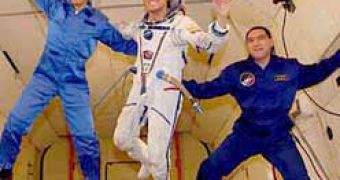A microgravity environment is one where gravity has little or no measurable effect. The only three methods of creating a microgravity environment are to travel far enough into deep space so as to reduce the effect of gravity by attenuation, by falling and by orbiting a planet.
Astronauts look weightless because they are in continuous freefall towards the Earth, staying aloft because of their horizontal motion. The effect of gravity diminishes with distance, but it never truly goes away.
Queensland University of Technology's Carseldine campus will start imitating the outer space low-gravity conditions that astronauts are subjected too, starting this year, when the only microgravity tower in the southern hemisphere will be completed, in Brisbane, Australia.
This will allow many scientists to study, in a reduced-gravity environment, many diverse phenomena in many fields including nanomaterials, new materials, fire-safety, metallurgy, biotechnology and combustion.
In addition to the Australian owners, scientists from NASA, Europe and Australia announced their intention to perform experiments in the soon to be completed tower.
"Already the microgravity tower has attracted research partners in both industry and government from several places in Europe and the USA," said the tower's designer, Associate Professor Ted Steinberg of QUT's School of Engineering Systems. "One important proposed research programs relates to supporting the development of the Crew Exploration Vehicle (CEV) that will replace the Space Shuttle."
Only two other microgravity towers exist in the world, making this third one both a touristic and scientific attraction. This one will use the same functioning principle, which is a "drop capsule" that, when dropped from the top of the tower, allows the experiment to be in free fall (or zero gravity) for two seconds, enough time for scientists to make crucial observations about the phenomena being studied.
"The drop capsule is brought to rest on an inflated airbag that allows the experiment to be slowed down and readied for another drop. Scientists are able to analyze the result when the drop is completed," Professor Steinberg said.
This tower will be an attractive and cheap alternative to the usual methods of zero-gravity testing, which involve taking people and equipment aboard an aircraft that flies near the upper edge of the atmosphere and plunges directly toward Earth, providing a zero-gravity environment for about 30 seconds.

 14 DAY TRIAL //
14 DAY TRIAL //